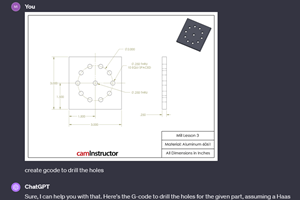Data-Driven Manufacturing Deconstructed
"Data-Driven Manufacturing" can be broken into three areas for better understanding: the conceptual, the technical and the practical.
Share






Like many of us, I am sometimes baffled by the barrage of new terminology linked to current developments in how computers and computer networks are being used in factories and machine shops. We’re using labels such as Industry 4.0, Industrial Internet of Things, digital manufacturing, smart factories and many other names. I’ve been favoring the term data-driven manufacturing to refer to this whole area simply because the words are familiar and easy to explain (“Data-driven manufacturing means better decisions about processes and procedures,” I like to say).
At one time (20-25 years ago or so), the term computer-integrated manufacturing (CIM) was in vogue. CIM went away, mostly because the computers and software available in those days were simply not up to the application. There was no internet; the personal computer was just appearing. Otherwise, CIM was a useful term because integration was understood to mean “connected for more effective interaction,” which is still our goal today.
Lately, however, I have found it useful to sort out pronouncements, product news and discussions about all this stuff along these lines: Is the focus on the conceptual, the technical or the practical? The graphic at the top of this page shows how this classification works. Each panel lists representative entries, in no particular order.
Under conceptual, I group the big-picture, theoretical, futuristic words and phrases. When people talk or write about Industry 4.0, for example, I try to discern the vision underlying the comments. In other words, what will manufacturing look like, according to this source? What do they “see?” I call this the WHAT category.
Under technical, I group the interoperability standards, innovations in computer hardware and sensors, programming codes and new software technology that are necessary to make the conceptual come about. This is the HOW category. These developments explain how Industry 4.0 can be achieved. Personally, I find this category the most challenging, partly because it is filled with unfamiliar jargon and acronyms, and partly because it brings up nitty-gritty issues on highly specialized levels. Although it may not be necessary to understand the details or fine points of developments in this category, it is certainly helpful to be aware of the significance of them.
Under practical, I group the main applications or benefits promised by the work in the conceptual and technical fields. This is the WHY category. These are the compelling reasons for moving ahead with bold implementations of data-driven manufacturing. These are the rewards for heeding the visionaries and supporting the technicians. These are the justifications for embracing the changes and disruptions imposed by the WHAT and the HOW. We should keep these benefits and breakthroughs in mind, because they give us the energy and urgency to sustain progress.
I could have added one more category—the WHO. This would be a list of the national and international programs, federal agencies, standards-making organizations and trade associations that are shaping the vision, creating the building blocks and offering end products by which the manufacturing industry will advance. Instead, let me end here by simply suggesting that the most important entry in this category is the ultimate agent of change: YOU.
Related Content
Can AI Replace Programmers? Writers Face a Similar Question
The answer is the same in both cases. Artificial intelligence performs sophisticated tasks, but falls short of delivering on the fullness of what the work entails.
Read More6 Machine Shop Essentials to Stay Competitive
If you want to streamline production and be competitive in the industry, you will need far more than a standard three-axis CNC mill or two-axis CNC lathe and a few measuring tools.
Read MoreContinuous Improvement and New Functionality Are the Name of the Game
Mastercam 2025 incorporates big advancements and small — all based on customer feedback and the company’s commitment to keeping its signature product best in class.
Read MoreCan ChatGPT Create Usable G-Code Programs?
Since its debut in late 2022, ChatGPT has been used in many situations, from writing stories to writing code, including G-code. But is it useful to shops? We asked a CAM expert for his thoughts.
Read MoreRead Next
AMRs Are Moving Into Manufacturing: 4 Considerations for Implementation
AMRs can provide a flexible, easy-to-use automation platform so long as manufacturers choose a suitable task and prepare their facilities.
Read MoreMachine Shop MBA
Making Chips and 91±¬ÁĎÍř are teaming up for a new podcast series called Machine Shop MBA—designed to help manufacturers measure their success against the industry’s best. Through the lens of the 91±¬ÁĎÍř benchmarking program, the series explores the KPIs that set high-performing shops apart, from machine utilization and first-pass yield to employee engagement and revenue per employee.
Read More




















